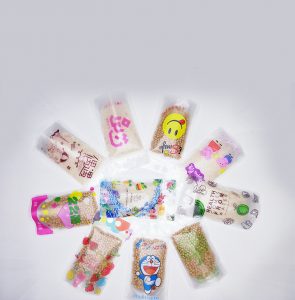Designing window pouches is an art that requires a careful balance of creativity, functionality, and brand representation. Here are the key aspects involved in the art of designing window pouches:
- Understanding the Product: The first step is to thoroughly understand the product that will be packaged inside the pouch. Consider its size, shape, color, and unique features. Understanding the product’s selling points and target audience will help guide the design process.
- Defining Brand Identity: Incorporate the brand’s identity, values, and personality into the design. Ensure that the packaging aligns with the overall brand image and messaging. Consistent branding fosters recognition and strengthens brand impact.
- Choosing the Right Window Shape and Size: Determine the window shape and size that best showcases the product. It should provide a clear and unobstructed view of the most appealing aspects of the product. A unique window shape can create visual interest and make the packaging stand out.
- Material Selection: Select high-quality materials that not only showcase the product effectively but also align with the brand’s sustainability goals, if applicable. Consider factors like transparency, texture, and durability when choosing materials.
- Typography and Graphics: Use typography and graphics that complement the brand identity and product theme. Typography should be easily legible and reflect the brand’s style. Graphics can enhance storytelling and evoke emotions related to the product.
- Balance Design Elements: Achieve a harmonious balance between the window area and the surrounding design elements. Avoid overcrowding the packaging with too much text or graphics that might distract from the product view.
- Playful Elements (if appropriate): For products aimed at children or playful markets, consider incorporating whimsical or interactive elements around the window. Playful designs can create an emotional connection and engage younger audiences.
- Branding Around the Window: Maximize the branding opportunities around the window area. This includes logo placement, taglines, and key product information. Ensure that the branding elements complement the window design.
- Prototyping and Testing: Create prototypes to visualize the design and assess its practicality. Test the packaging with the actual product to ensure that the window displays the desired aspects effectively.
- Unboxing Experience: Consider the unboxing experience when designing window pouches. Ensure that the product presentation through the window enhances the excitement and delight of opening the package.
- Differentiation and Market Trends: Analyze market trends and competitors to ensure your window pouch design stands out from the crowd. Seek ways to differentiate your packaging while meeting consumer preferences.
- Iterative Process: The art of designing window pouches often involves an iterative process. Refine and improve the design based on feedback and usability considerations.
The art of designing window pouches requires creativity, attention to detail, and a deep understanding of the brand, product, and target audience. By skillfully combining aesthetics with functionality, designers can create window pouches that not only showcase the product effectively but also leave a memorable and positive impression on consumers.













